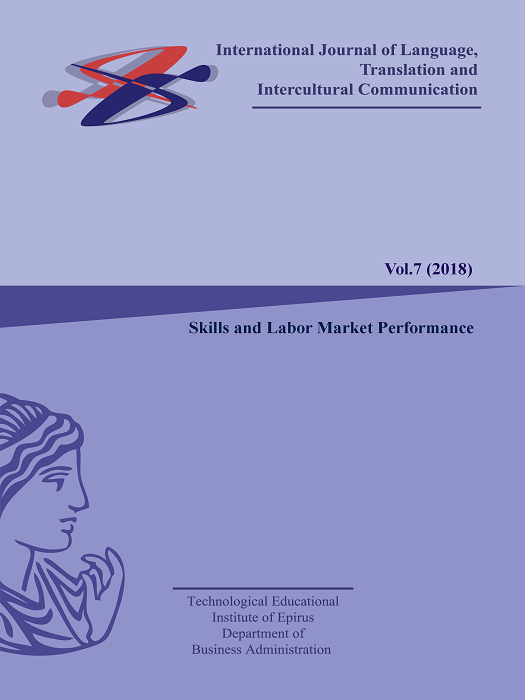Identifying the language skill of consecutive interpreters. Towards the development of recommendations on language choices in interpreters’ notes

Abstract
This article reports on a small-scale empirical study on note-taking in consecutive interpretation. Present-day interpretation labor market has faced a number of changes, as nowadays interpreters challenge themselves to work with different language combinations. A sufficient level of an in-demand language skill is now critical for employability of young trainees in the labor market. The present research illustrates the way interpreter trainees with different language skill sets carry out similar tasks in different interpretation settings.
For primary research data, the study uses results of a background survey, complete with audio recordings of the performance and the notes produced by eight subjects while interpreting an English source text consecutively into Japanese. The aim of the study is to explore the differences in consecutive interpretation of interpreters in classical settings (L2 to L1) and in emerging new trends in the labor market (L2 to L3). The article argues that the language skill required for each trend in the interpretation labor market is defined by the specific interpretation settings.
Article Details
- How to Cite
-
SASAKI, A. (2018). Identifying the language skill of consecutive interpreters. Towards the development of recommendations on language choices in interpreters’ notes. International Journal of Language, Translation and Intercultural Communication, 7, 33–44. https://doi.org/10.12681/ijltic.16165
- Section
- Articles

This work is licensed under a Creative Commons Attribution-NonCommercial-ShareAlike 4.0 International License.
Copyright Notice
Authors who publish with this journal agree to the following terms:
- Authors retain copyright and grant the journal right of first publication with the work simultaneously licensed under a Creative Commons Attribution License that allows others to share the work with an acknowledgement of the work's authorship and initial publication in this journal.
- Authors are able to enter into separate, additional contractual arrangements for the non-exclusive distribution of the journal's published version of the work (e.g., post it to an institutional repository or publish it in a book), with an acknowledgement of its initial publication in this journal.
- Authors are permitted and encouraged to post their work online (e.g., in institutional repositories or on their website) prior to and during the submission process, as it can lead to productive exchanges, as well as earlier and greater citation of published work (See The Effect of Open Access).


